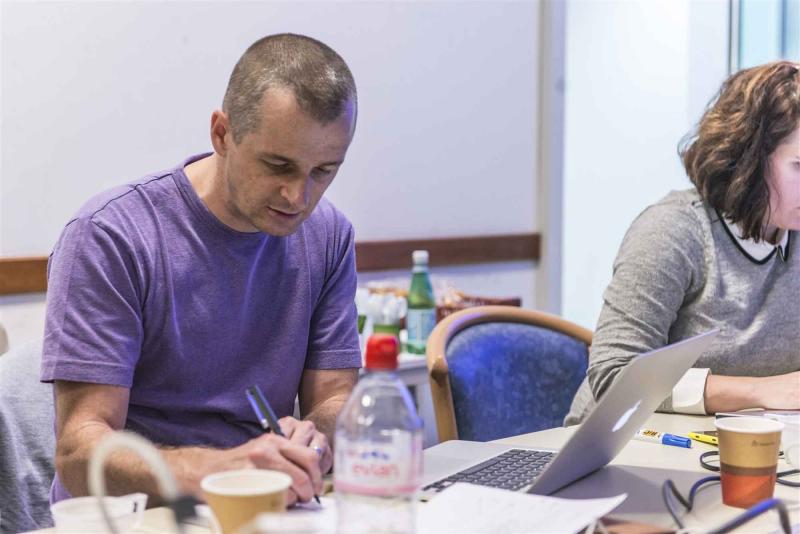An interview with web designer Mark Boulton at the CERN line-mode browser hack days.

Mark Boulton buidling typography at the CERN line-mode browser hack days (Image: Anna Pantelia/CERN)
Name: Mark Boulton
Nationality: British
Travelled from: Wales
Profession: Web designer and founder of Mark Boulton design.
Why did you come to the CERN line-mode browser hack days?
The main reason is because I think it's important. We're highlighting that digital stuff can die and go away, and that isn't okay. The first website and the method of browsing the first website died 20 years ago. We want to make sure we can bring that back so people can see how the web was browsed in the days that it was first created. And that's pretty special I think.
Is there an attitude that it is okay for things to die online?
Unfortunately there's a history of that. You remember GeoCities? Whole communities that have been there years are lost forever. Maybe it comes down to the fact that – you know, the content doesn't rot, we can't put it in a landfill. There's no material cost. It's just pixels, and pixels cost nothing to create. So people have the attitude that it doesn't matter if they die.
But surely once you have a URL it's there forever right?
Well, that's not the case unfortunately. You can have a URL, but then URLs stop working. Just a few days ago quite a well-known magazine in the UK closed its website. All the URLS for all the articles fro the past 4-5 years are dead. Gone. If you wanted to find an article on that site now, you can't. And that's a problem. I know it takes time and money and effort to keep URLs alive sometimes. But some URLS should never have gone away. Like the first website. Because that is history.
What are you focusing on in these two days?
I'm recreating the typeface. We have a test IBM terminal with the line-mode browser running and we've done some research into the typeface. We can't get it off the machine because it's probably hardware encoded. It's a typeface similar to Courier, but it's not Courier.
So the typeface is lost in the machine?
Well, no. We can't quite work it out. We think the machine renders the typeface. It's not a file that runs on the system like we use fonts now. It's maybe hardcoded into the display. So the computer just gives the display a message "display this character" and it's hardware encoded into the monitor to display that character.
So to simulate the typeface, we've just taken really close up photographs of the screen and then recreated them in a bitmap format. There's a very limited character set – you don't really need too many letters.
What would you like people to take away from the experience of using the line-mode browser?
I'd like people to take away how far we've come but also to take away an understanding of how revolutionary the web was when it first appeared. It was a pretty special moment when the web came about.

Comments
Submitted by Jen Simmons (not verified) on 20 Sep 2013 Permalink
This is just such an exciting
This is just such an exciting project. I can't wait to see the finished results.
I hope you are able to release this font as an open-source project on it's own. I've had reason several times over the years to need a early terminal font, and it's not easy to find a modern font that truly gives the look of the first screen-based computers. It'd be a great gift.
Also, this website is looking pretty good ;)